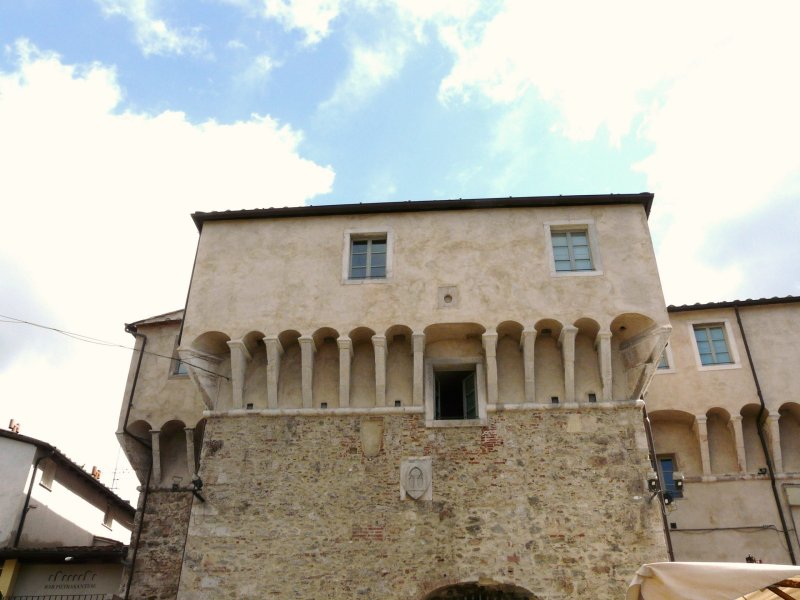
Rocchetta Arrighina
La Rocchetta Arrighina è un edificio militare del XIV secolo di Pietrasanta, accanto all'arco di Porta a Pisa.
La Rocchetta Arrighina è un edificio militare del XIV secolo di Pietrasanta, accanto all'arco di Porta a Pisa. Storia Per rafforzare il sistema difensivo di Pietrasanta, nel 1324 Castruccio Castracani fece rafforzare la Rocca di Sala e costruire la Rocchetta Arrighina attigua alla Porta a Pisa. Fu lo stesso condottiero che intese imporle questo nome in onore di suo figlio Arrigo. «Alli 20 di marzo 1324, avendo considerato che fosse bene fortificare e presidiare la terra di Pietra Santa, molto fertile e popolata e di bellissimo sito alla marina, vi andò con uomini prattichi, e vi condusse Enrico suo figliuolo, il quale volle che negli fondamenti gittasse la prima pietra; sopra la quale vi pose un bellissimo zaffiro legato in oro, in una tazza piena d’acqua e di vino: e ciò fu sotto la porta, chiamata la ghibellina, e nella posterla; ponendo in ciascuno di detti luoghi un fiorino di oro (pure in tazze piene di acqua e di vino) che era di quelli che egli faceva battere: e detta Rocca la fece chiamare l’Arrighina per il nome del figliuolo» (A.Manucci, Le azioni di Castruccio Castracani degli Antelminelli Signore di Lucca e con la genealogia della famiglia, p. 78) Secondo la Narrativa di Pietrasanta la Rocca venne invece iniziata da Arrigo Castracani degli Antelminelli, figlio di Castruccio Castracani: «Arrigo Antelminelli fe fondare la Rocha Arrighina et la Rocha Ghibellina, et nota che fu Arrigo figliuolo di Castruccio» (Narrativa di Pietrasanta, 1536) A conferma di questo sono presenti due targhe sopra la porta di tufo della rocca che riportano lo stemma dei Castracani e l'Aquila Imperiale. I lavori alle rocche vennero terminati entro il 1329. La piccola struttura era dotata di doppio ponte levatoio (all'esterno su un fossato pieno d'acqua e all'interno verso la piazza). Con essa la pianta difensiva della città assumeva la forma di un triangolo con al suo vertice l'antico insediamento longobardo sulla collina. Nel 1395 la Rocchetta venne rinforzata da un battifolle e da un rivellino e successivamente, nel 1456, fu dotata di campane. La Rocchetta fu distrutta durante l'assedio fiorentino del 1484, ma poco dopo fu ricostruita da Francesco di Giovanni di Francesco detto il Francione e da Francesco d'Agnolo detto La Ciecca. Alla metà del XVIII secolo la Rocchetta venne smantellata delle attrezzature militari. Nel XIX secolo subì importanti rimaneggiamenti con la costruzione di corpi di fabbrica addossati e l´apertura di nuove finestre al piano terra. Oggi la Rocchetta è una proprietà privata.
Condividi su:
Diventa Redattore!
Vuoi diventare redattore di Pietrasanta.it?
Potrai scrivere articoli sul tuo paese, gli eventi, le manifestazioni etc...
Inviado questa richiesta ci autorizzi a contattarti per maggiori informazioni.
I tuoi dati saranno trattati come previsto dalla privacy.
